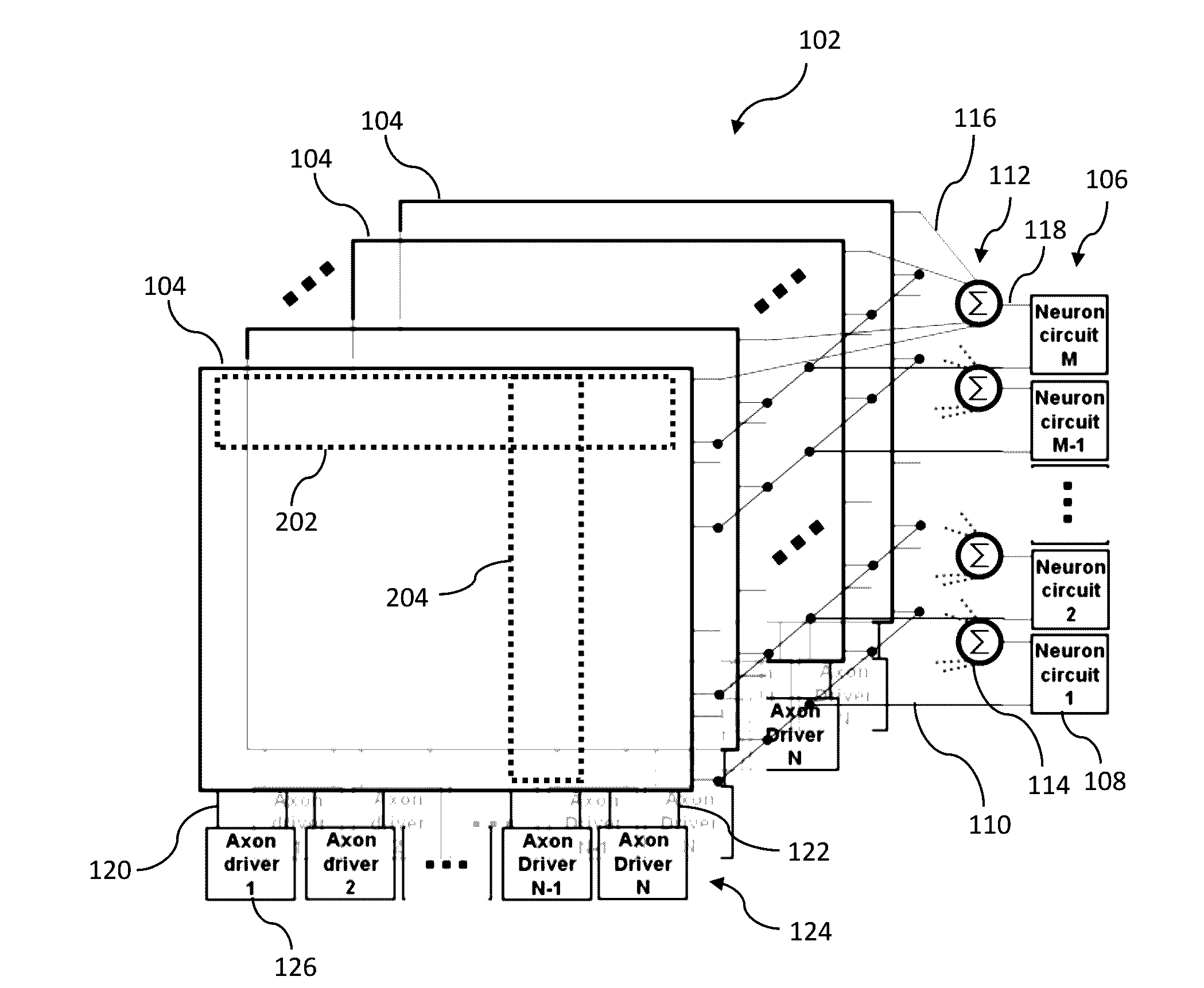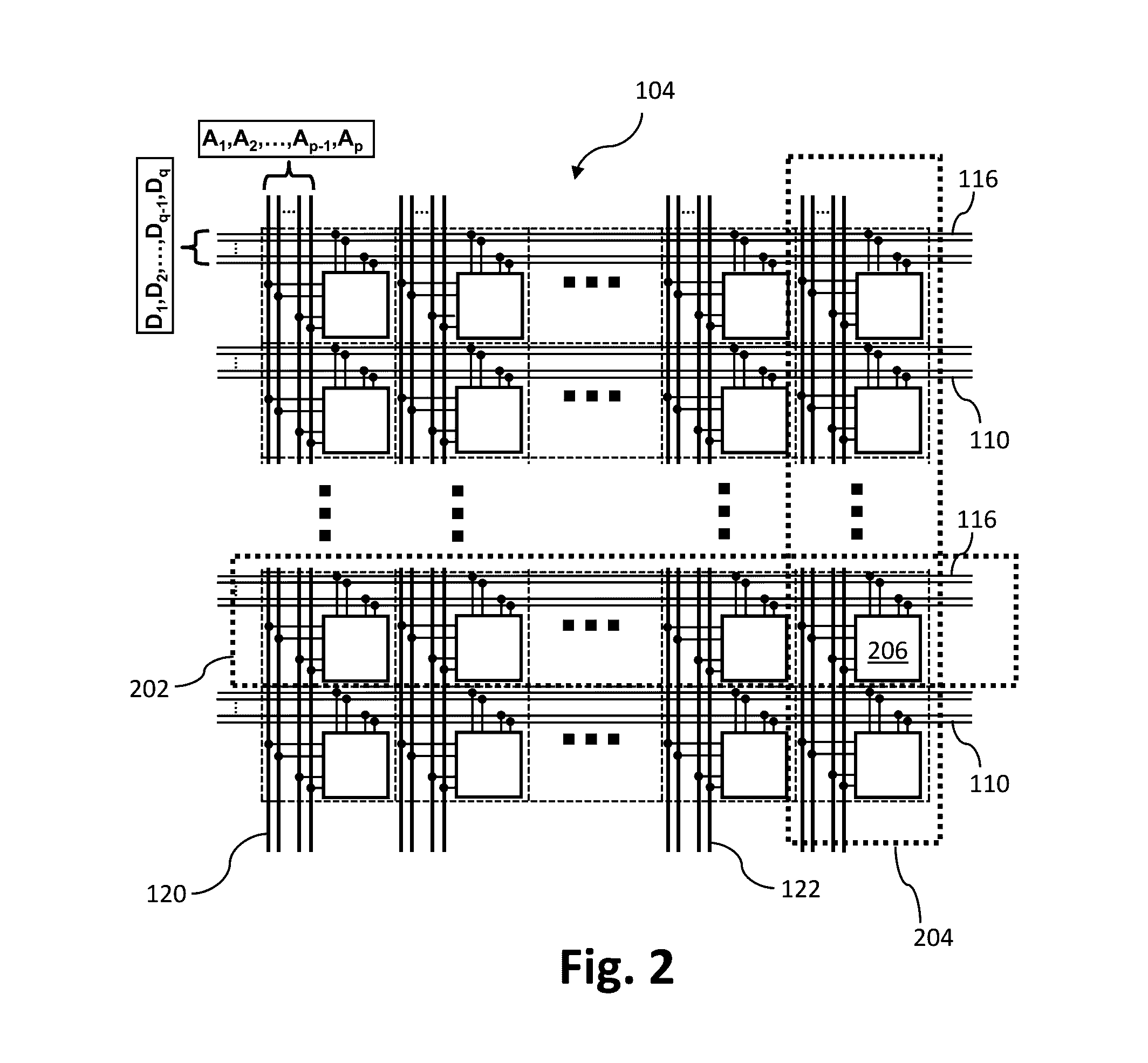Neuron peripheral circuits for neuromorphic synaptic memory array based on neuron models
a neuron model and peripheral circuit technology, applied in the field of memory circuits, can solve the problem that the neuromorphic system generally does not utilize a traditional digital model
- Summary
- Abstract
- Description
- Claims
- Application Information
AI Technical Summary
Benefits of technology
Problems solved by technology
Method used
Image
Examples
Embodiment Construction
[0023]The present invention is described with reference to embodiments of the invention. Throughout the description of the invention reference is made to FIGS. 1-12. When referring to the figures, like structures and elements shown throughout are indicated with like reference numerals.
[0024]Neuromorphic computing is motivated by the computational method used by the biological brains (more specifically mammal cerebral cortex) mainly comprised by neurons and synapses. Computational methods used by the biological brains are quite different from that of today's computer systems which is based on the Von Neumann architecture. Therefore, solid state devices that enable the neuromorphic applications in a power and area efficient manner require a new device concept organized in a new array structure.
[0025]Solid state non-volatile resistive memory elements can be used to emulate the function of synapses in a cerebral cortex. The function of neurons in a cerebral cortex can be modeled by a ne...
PUM
 Login to View More
Login to View More Abstract
Description
Claims
Application Information
 Login to View More
Login to View More - R&D
- Intellectual Property
- Life Sciences
- Materials
- Tech Scout
- Unparalleled Data Quality
- Higher Quality Content
- 60% Fewer Hallucinations
Browse by: Latest US Patents, China's latest patents, Technical Efficacy Thesaurus, Application Domain, Technology Topic, Popular Technical Reports.
© 2025 PatSnap. All rights reserved.Legal|Privacy policy|Modern Slavery Act Transparency Statement|Sitemap|About US| Contact US: help@patsnap.com



